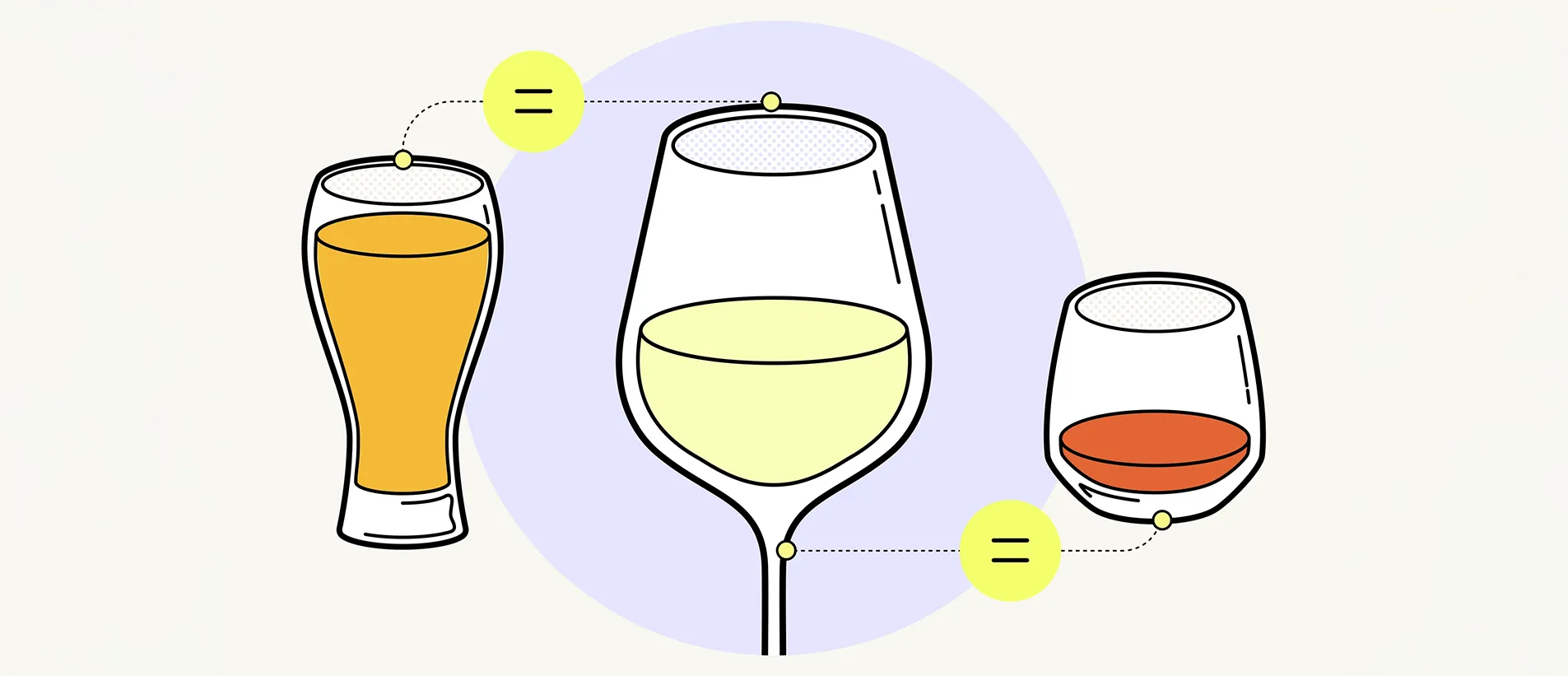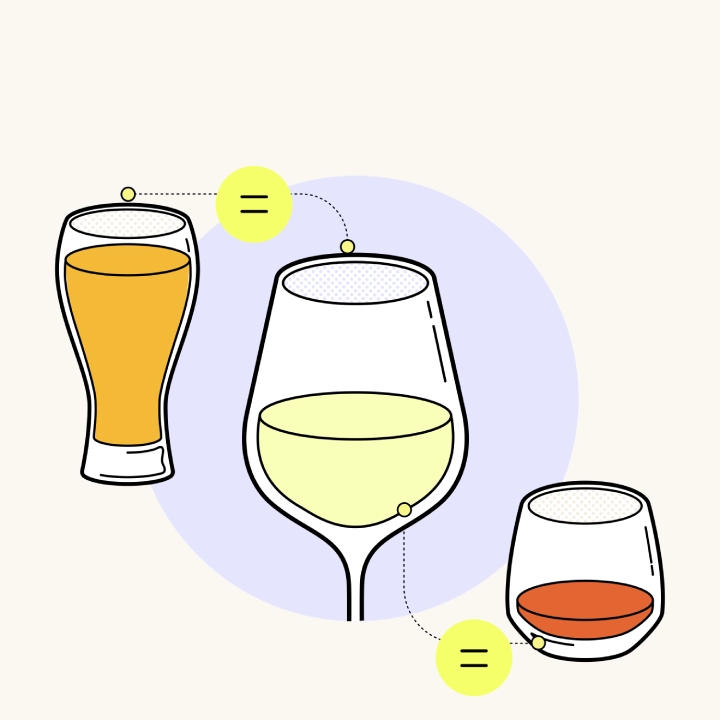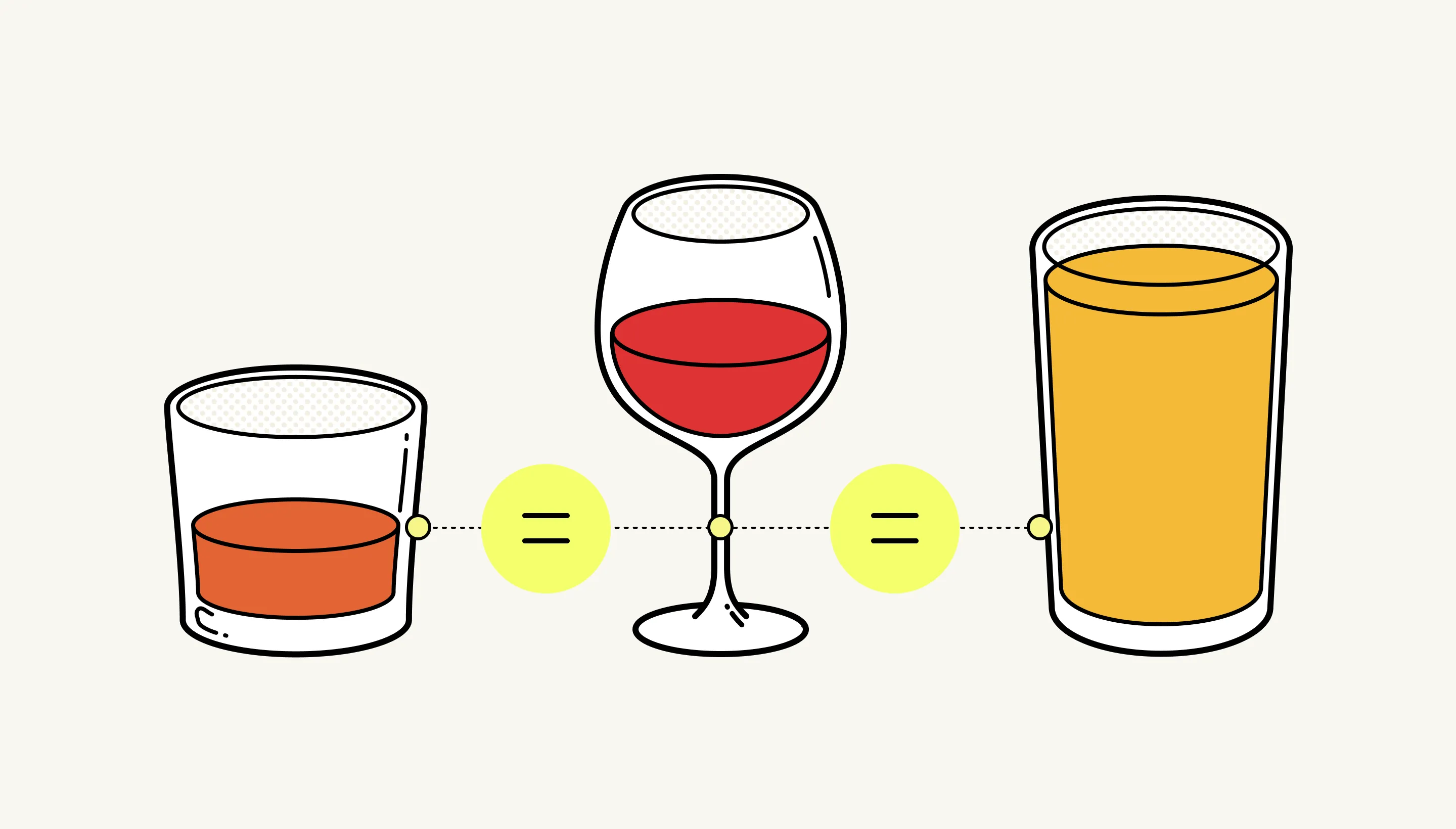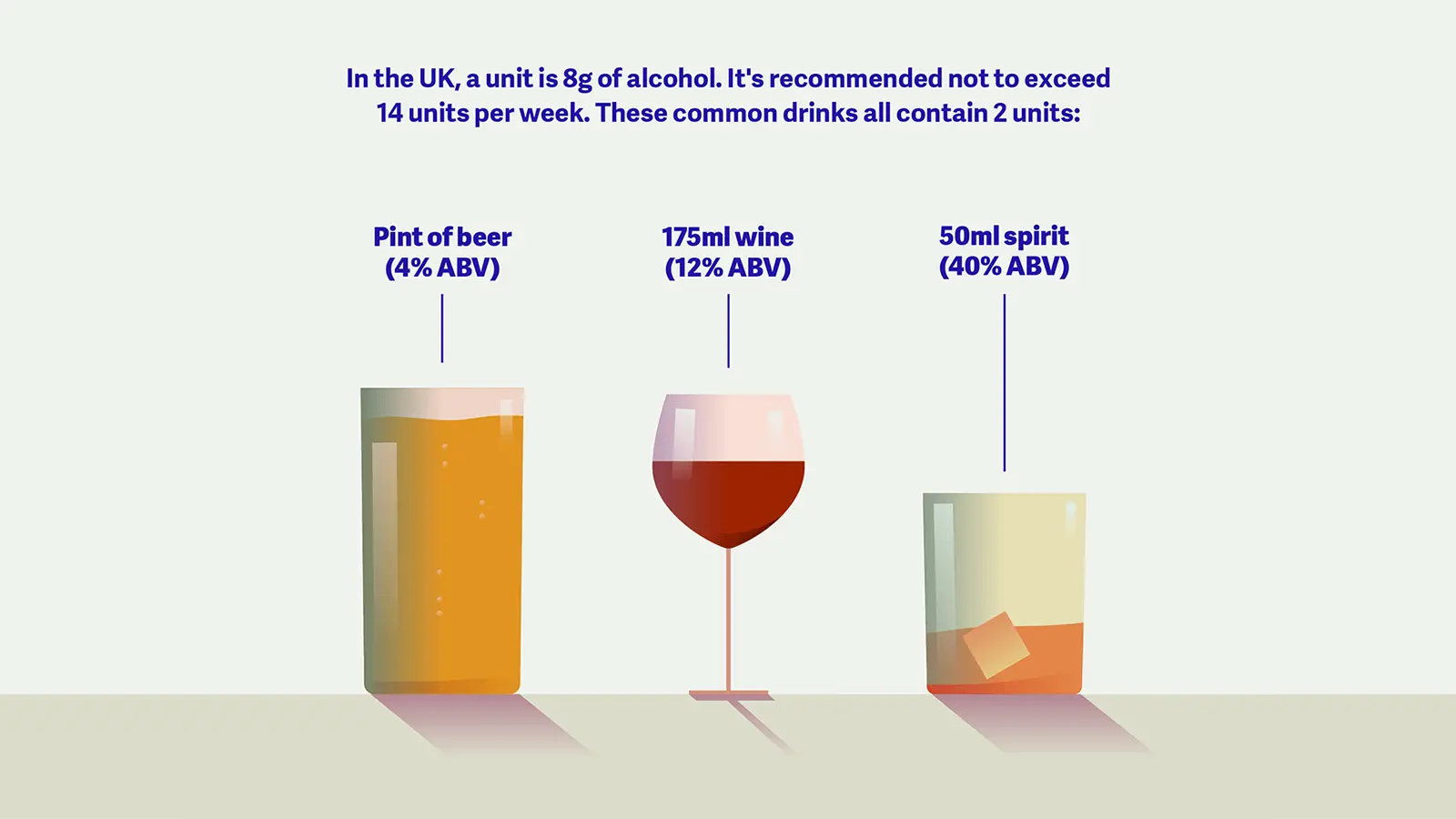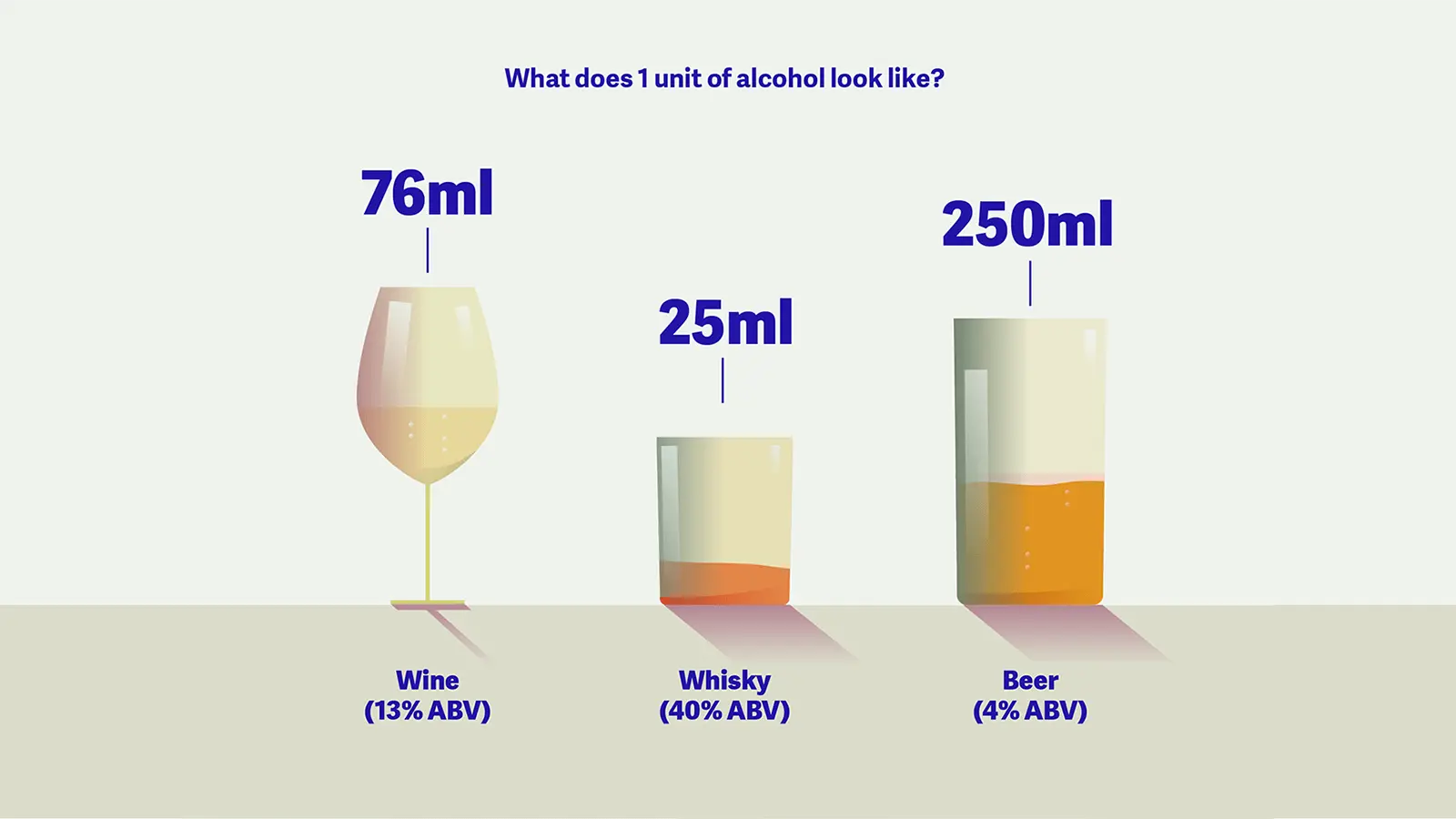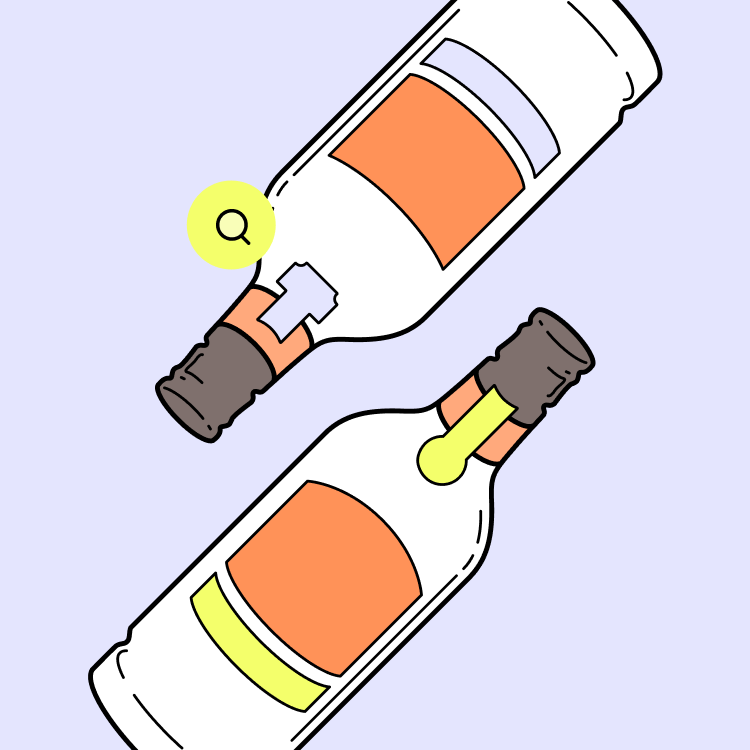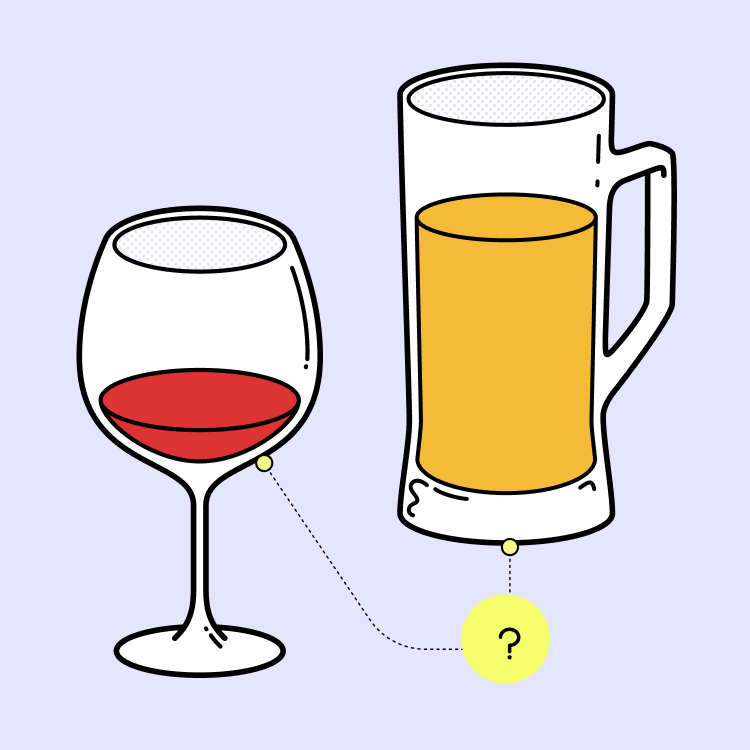A unit is a measure of the alcohol in your drink. It’s the same for beer, wine and spirits, and is expressed as grams of ethanol (1). In the UK, a unit contains eight grams (2).
The purpose of a unit is to provide consistency across beverage types and help translate the science behind drinking and health into something easily understood. This is important for providing drinking guidelines and advice. The UK Chief Medical Officer’s guideline for both men and women is not to drink more than 14 units a week on a regular basis, to minimise any health risks from alcohol (3).

